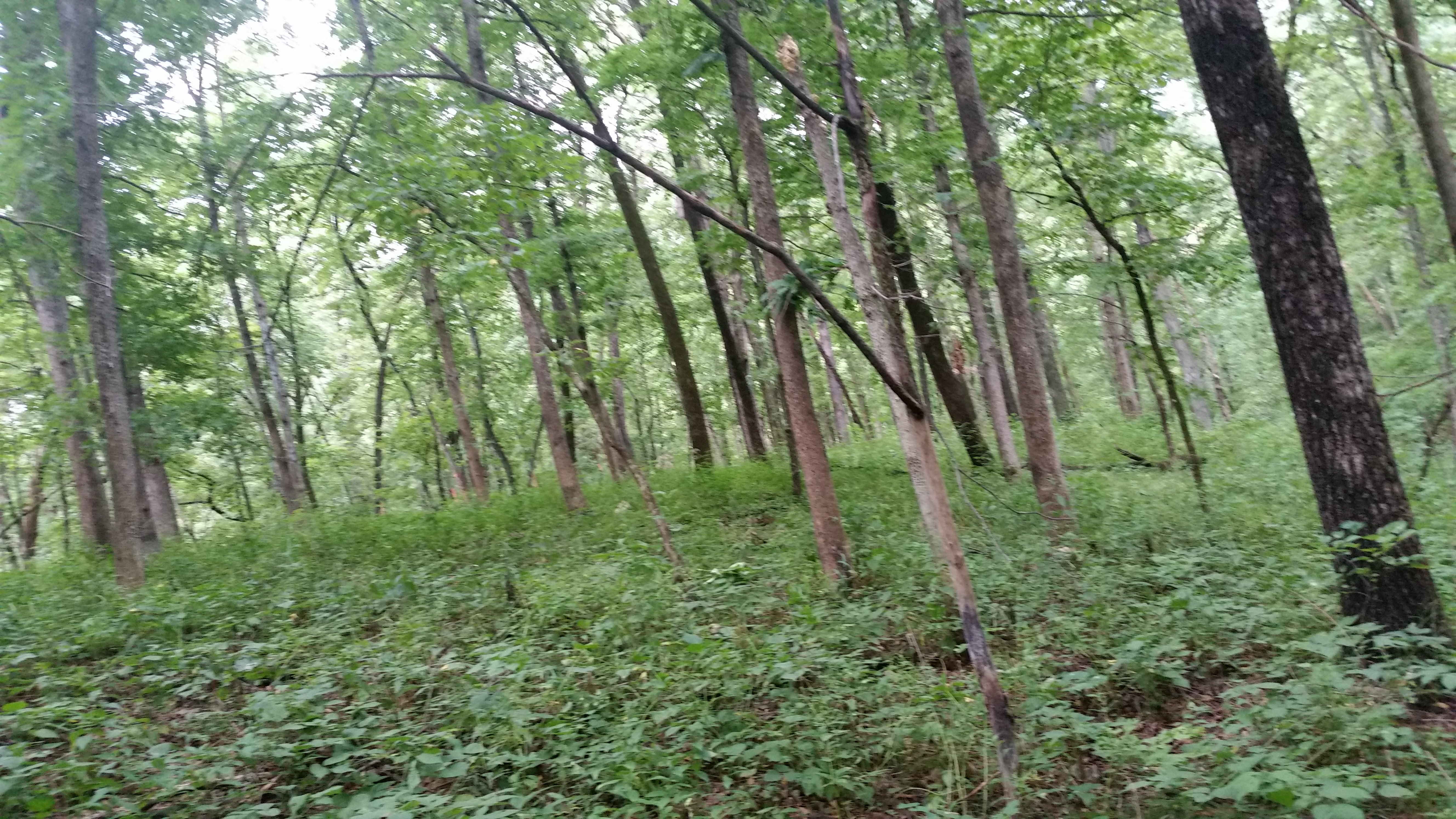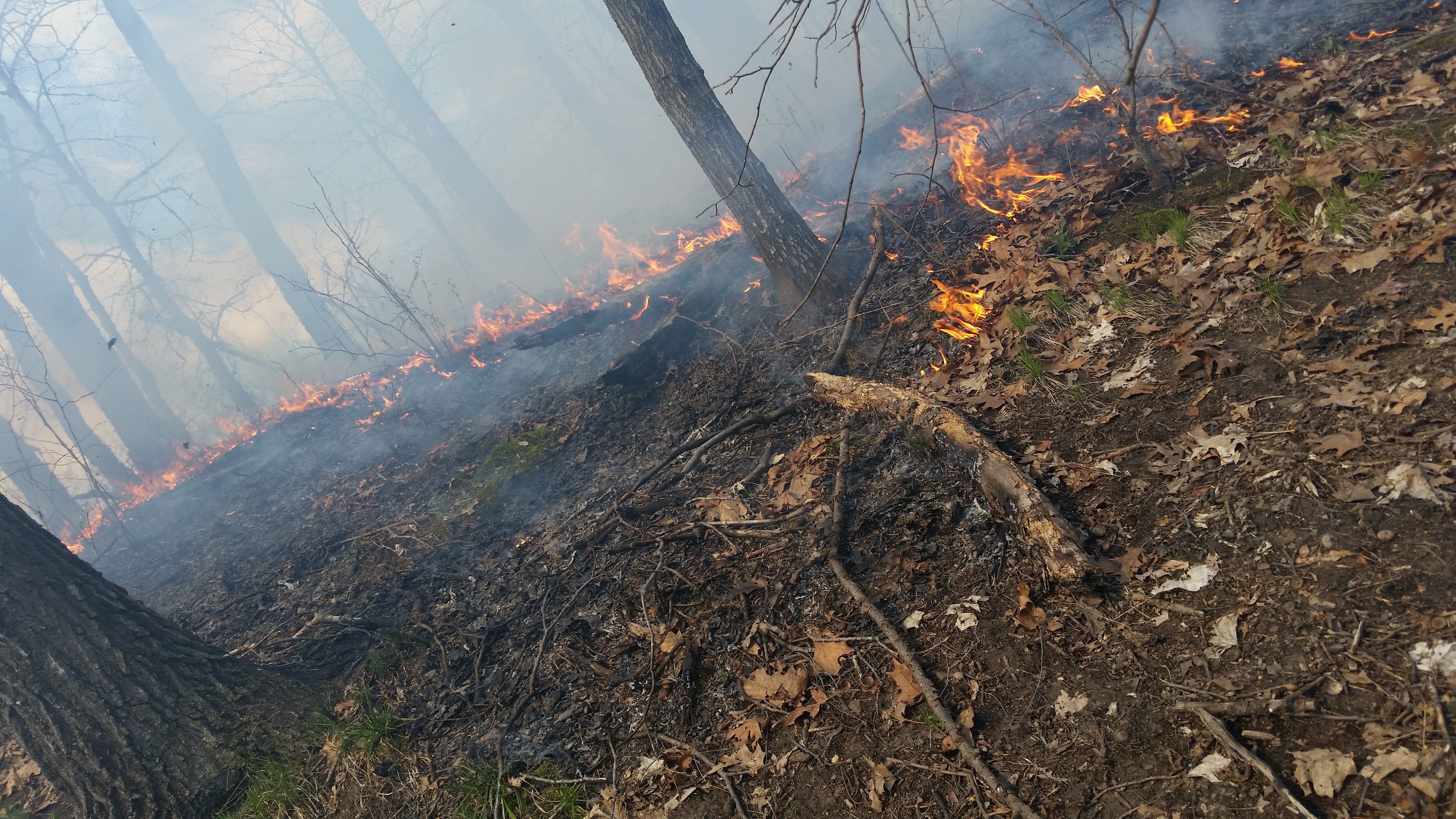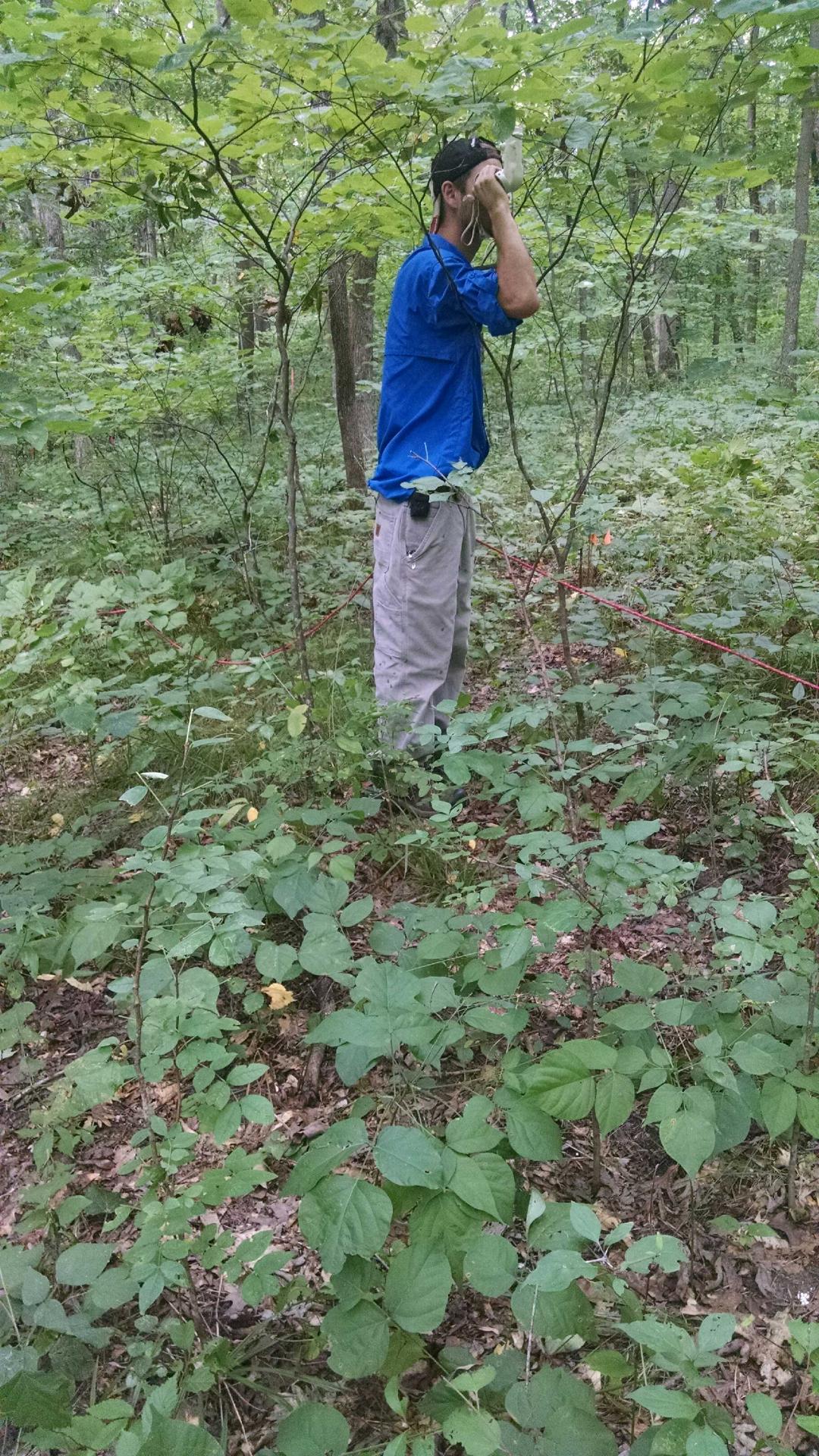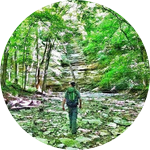About This Project
The lack of oak regeneration has become a widespread problem in the central hardwood region of the U.S., with most oak woodlands becoming mesic (i.e., more moisture). Oak ecosystems provide many benefits to wildlife in the Midwest by providing habitat and food resources. Fire suppression and white-tailed deer browsing have been indicated as reasons oaks are not regenerating. We have initiated a long-term project examining the effects of these two on oak regeneration and ground flora.
Ask the Scientists
Join The DiscussionWhat is the context of this research?
In the last several decades, oak woodlands have undergone rapid succession to more mesic closed-canopy conditions with a change in overstory composition and a lack of oak regeneration (O.R.) . Several silvicultural techniques have been shown to increase O.R. but few long-term studies have examined prescribed fire and excluding deer on O.R.. Restoring and maintaining oak woodlands benefits wildlife, biodiversity, the economy, and recreation (Yaussy et al. 2008) by providing quality timber for harvesting, habitat for wildlife, increasing biodiversity and recreation opportunities. Our research project, which is in its fifth year, will allow us to examine the long term effects of prescribed fire and deer browsing on woodland composition, oak regeneration, and ground flora diversity.
What is the significance of this project?
Oak woodlands provide many benefits including increased habitat for wildlife, biodiversity, timber harvesting, and recreation. Many species are adapted to, and rely on oak forests for habitat such as wild turkeys, tree squirrels, and many song birds. By increasing wildlife abundance, recreation is enhanced. Because oak woodlands are declining, long term research can insight into best and most effective management practices to restore them. We want to examine the effects of fall and spring burning, but also how deer browsing affects O.R.. This will allow us to take a long term look at three possible reasons why oaks are not replacing the overstory of our woodlands. Oak woodlands are declining quickly and research must be done to look for methods to maintain native landscapes.
What are the goals of the project?
The main goal of this project is to determine if prescribed fire and reduced deer browsing are viable management tools for restoring oak forests. We would also like to determine fire and browsing effects on the ground flora component of oak ecosystems. We suspect periodic burning will decrease competition of woody shrubs and trees with oak seedlings, and increase diversity of the herbaceous flora.
Budget
The two haglof calipers will be used to measure the diameter at breast height (DBH, 1.5 meters off the ground) of overstory trees. The two Hagloff increment corers will be used to core trees to determine age structure and changes in growth rates. The two Keson measuring tapes will be used to measure plot dimensions. Mileage is for graduate student to drive to study site(s).
Endorsed by
Meet the Team
Affiliates
Affiliates
Will Rechkemmer
My thesis research examines the effects of fall and spring fires on hardwood regeneration and groundflora diversity. This is part of a long term study at the site examining different burning regimes on oak ecosystems. Along with my thesis research I am currently involved in many research projects including population ecology research of Southern Flying Squirrels, population ecology research of Bobcats, Asian carp research, prescribed fire effects on ticks and gastropods, oak regeneration research in Iowa and mussel sampling on the Mississippi River. Through this research I have gained experience in a variety of areas including; trapping/handling of large and small mammals, collection methods for ticks and gastropods, various plant community sampling methods and designing/implementing new research. My main research interests are the effects of disturbances (e.g., wildfire, prescribed fire, invasive species) on floral and faunal communities.
Sean E. Jenkins
My primary research interests lie within the field of landscape ecology, specifically in the effects of fire and other disturbances on the spatial demography of overstory tree species. I am particularly interested in what roles the historical fire regimes, subsequent fire suppression and reintroduction of prescribed fire have played and continue to play in the regeneration dynamics of hardwood trees, especially oaks, and in the overall species diversity of both the overstory and groundflora components of Midwest savanna, grasslands and related communities. I have a wider area of interest in the ecology of forested, grassland and wetland ecosystems, specifically in the role of disturbance and management in influencing population dynamics of both floral and faunal components of these ecosystems.
University of Missouri-Columbia, Ph.D., Forest Ecology, 1997
Eastern Illinois University, M.S., Environmental Biology 1989
Eastern Illinois University, B.S., Environmental Biology, 1987
Additional Information

One of the burn units at our site. As you can see the under story has a rich herbaceous layer with very little woody growth, and the mid story is dominated by white oaks (Quercus alba).
 A prescribed burn conducted last spring on an oak barrens at the study site.
A prescribed burn conducted last spring on an oak barrens at the study site.
 Here I am using a GRS Densiometer to measure the canopy cover on one of my plots. By measuring canopy cover yearly, it will give us an idea of how fire may effect the over story of the site. This unit is an unburned (control unit), as you can see behind me the under story is dominated by red bud (Cercis canadensis) and very few oak saplings.
Here I am using a GRS Densiometer to measure the canopy cover on one of my plots. By measuring canopy cover yearly, it will give us an idea of how fire may effect the over story of the site. This unit is an unburned (control unit), as you can see behind me the under story is dominated by red bud (Cercis canadensis) and very few oak saplings.
Project Backers
- 6Backers
- 16%Funded
- $341Total Donations
- $48.71Average Donation


